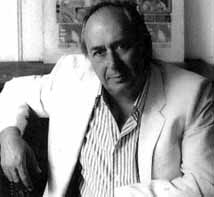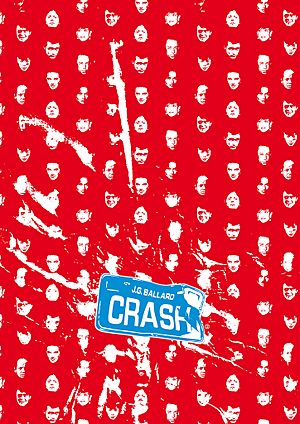J. G. Ballard facts for kids
Quick facts for kids
J. G. Ballard
|
|
|---|---|

Ballard in 1993
|
|
| Born | James Graham Ballard 15 November 1930 Shanghai International Settlement, China |
| Died | 19 April 2009 (aged 78) London, England |
| Occupation | Novelist, short story writer |
| Alma mater | King's College, Cambridge Queen Mary University of London |
| Genre | Science fiction transgressive fiction |
| Literary movement | New Wave |
| Notable works | Crash Empire of the Sun High-Rise The Atrocity Exhibition |
| Spouse |
Helen Mary Matthews
(m. 1955; died 1964) |
| Children | 3, including Bea Ballard |
James Graham Ballard (often called "Jim") was an English writer. He wrote many novels and short story collections. He was an important part of the "New Wave" movement in science fiction.
Some of his most famous books are Crash (1973) and Empire of the Sun (1984). He was born on November 15, 1930, and passed away on April 19, 2009.
Contents
Life Story of J. G. Ballard
J. G. Ballard's father worked as a chemist for a cloth-making company. Ballard was born and grew up in the Shanghai International Settlement in China. This was an area controlled by foreign countries, where people lived a Western lifestyle. He went to school there at the Cathedral School.
War Years in Shanghai
When the Second Sino-Japanese War started, Ballard's family moved to downtown Shanghai. They wanted to be safe from the fighting. Later, after the attack on Pearl Harbor, the Japanese took control of the International Settlement.
In 1943, the Japanese began to hold Allied civilians in camps. Ballard, his parents, and his younger sister were sent to the Lunghua Civilian Assembly Center. He stayed in this camp for over two years. His family lived in a small space in a building with many other families. He also went to school inside the camp.
Many people believe that seeing the difficulties of war at a young age affected Ballard deeply. This experience is thought to explain the conflicts and challenging situations in many of his stories.
Return to England and Education
After the war ended in 1946, Ballard's mother took him and his sister back to England. They arrived in Plymouth. Ballard then attended The Leys School in Cambridge. A few years later, his mother and sister went back to China to be with his father.
Ballard lived with his grandparents when he wasn't at boarding school. In 1949, he started studying medicine at King's College, Cambridge. He planned to become a psychiatrist.
Becoming a Writer
While at university, Ballard began writing unusual stories. These stories were inspired by ideas about the mind and surrealist art. He wanted to be a writer, but also continue his medical studies. However, he stopped studying medicine.
In 1952, he enrolled at Queen Mary, University of London to study English Literature. But he was asked to leave at the end of that year. After this, Ballard worked for an advertising company and sold encyclopedias. He kept writing short stories, but they were not published yet.
In 1953, Ballard joined the Royal Air Force. He was sent to a flight-training base in Canada. He left the RAF in 1954 and returned to England. In 1955, he married Helen Mary Matthews. They lived in Chiswick.
Later Career and Success
Ballard published many novels and short story collections in the 1970s and 1980s. However, he became widely known only after his novel Empire of the Sun came out in 1984. This book was based on his own experiences in Shanghai and the internment camp. It became a very popular book.
Ballard continued to write throughout his life. He passed away in London from prostate cancer.
Dystopian Stories
Most of Ballard's novels, except for those about his own life, are set in a dystopia. A dystopia is an imaginary place where everything is unpleasant or bad. These stories often show a future world that has gone wrong.
One of his popular short story collections is Vermilion Sands (1971). It is set in a strange desert resort town. This town is home to forgotten movie stars, unusual artists, and very odd people. Each story in the collection features strange technology. For example, there are sculptors who carve clouds and computers that write poetry. There are also orchids that can sing and paintings that paint themselves in the sunlight.
Another collection, Memories of the Space Age, explores how people's minds are affected by space exploration. It looks at the psychological impact of the American space race in the 1960s and 1970s.
Books by J. G. Ballard
Novels
|
|
Short Story Collections
|
|
Other Books
- A User's Guide to the Millennium: Essays and Reviews (1996)
- Miracles of Life (His autobiography; 2008)
Film and TV Adaptations
Many of J. G. Ballard's stories have been made into films and television shows.
Films
- When Dinosaurs Ruled the Earth (1970) directed by Val Guest
- Empire of the Sun (1987) directed by Steven Spielberg
- Crash (1996) directed by David Cronenberg
- The Atrocity Exhibition (2001) directed by Jonathan Weiss
- Aparelho Voador a Baixa Altitude (2002), directed by Solveig Nordlund. (This is a Portuguese film based on his short story "Low Flying Aircraft")
Television
- "Thirteen to Centaurus" (1965) from his short story – directed by Peter Potter (BBC Two)
- Crash! (1971) directed by Harley Cokliss
- "Minus One" (1991) from the story of the same name – a short film directed by Simon Brooks.
- "Home" (2003) mostly based on "The Enormous Space" – directed by Richard Curson Smith (BBC Four)
Images for kids
-
Ballard's Vermilion Sands story "The Singing Statues" was featured on the cover of the July 1962 issue of Fantastic magazine. The artwork was by Ed Emshwiller.
See also
 In Spanish: J. G. Ballard para niños
In Spanish: J. G. Ballard para niños






